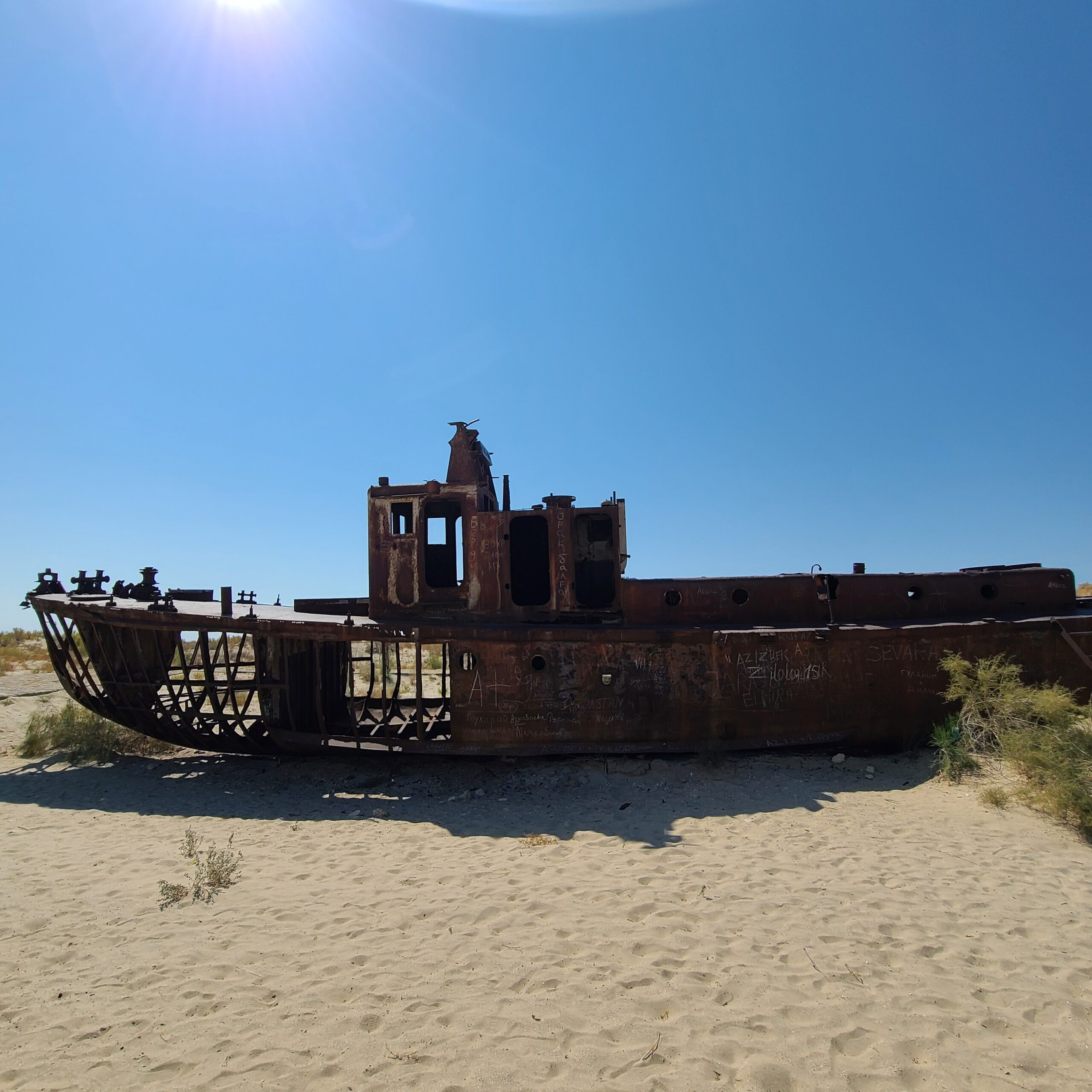
Aral Sea: How to Get There & My Experience
Witnessing the tragedy of the Aral Sea was one of my reasons to visit Uzbekistan. I just want to share my experiences at the former sea, and the journey to there.
Background of the Aral Sea
Aral Sea was the 4th largest lake in the world until more than 90% of it dried up in current times. One of the main causes was the two rivers (Amu Darya & Syr Darya) that flowed into the Aral Sea were diverted for irrigation purposes, mainly cotton to realize the Soviet Union’s ambitions to make the nation to be the largest cotton producer in the world. This process caused the Aral Sea to not have water coming in to the lake and evaporate. Now, the southern part of the Aral Sea, or Uzbekistan’s side, are pretty much all desert with a very small part of it left on Kazakhstan’s side.
The negative effects of the Aral Sea disaster are still present, with locals being afflicted with respiratory diseases caused by gust wind mixed with pesticides that were used for the irrigation projects. The economy became terrible also with local towns (particularly, Muynak/Moynoq) that had relied heavily on fishing suddenly had their main source of income vanished.
How to Get to the Aral Sea in Uzbekistan
I recommend positioning yourself in Nukus for a few days at least to get to the Aral Sea easily. Nukus is the capital of Uzbekistan’s autonomous republic of Karakalpakstan, and is the biggest settlement closest to the Aral Sea. The fastest way to get there is by a direct flight (~1hr 40min) from Uzbekistan’s capital city, Tashkent. Another way would be to use the train. Unfortunately, the Afrosiyob high speed train does not go all the way to Nukus, so you’d have to take the older train, which can take ~9 hours from Bukhara, and almost double that from Tashkent. The train is of cheaper than the flight, but what you choose will depend on your financial and time constraints.
After positioning yourself in Nukus, you can hire a private driver from your hotel or through certain tour agencies. I used Islambek Travel for a private Muynak day trip for $59 with hotel pickup & drop-off. Along the way, you’ll also visit Mizdarkhan, a necropolis in Karakalpakstan. Keep in mind that the private driver speaks very limited English, at least the one that I got. So, don’t expect to have in-depth history of the Aral Sea from the driver. The ride from Nukus to Muynak roughly takes 2 hours one-way.
If you wish to see the shore point of the Aral Sea, then you’d need another day as it’d take another 3-4 hours from Muynak on a 4WD. From there, there are yurt camps in the area where you can stay the night. Islambek Travel will provide the tour as well. I wasn’t able to make that trip due to time constraints. Other than the tour agency, hotels in Nukus can certainly get you to Aral Sea with their own drivers.
My Journey to the Aral Sea
I was picked up by my driver at Tashkent Hotel in Nukus at 8am. Most of the journey was uneventful with a long narrow road in the middle of the desert, with occasional buildings passing by. We first stopped at the necropolis of Mizdarkhan, which is also Central Asia’s biggest cemetery grounds. The driver waited for me at the entrance, and I roamed freely by myself.
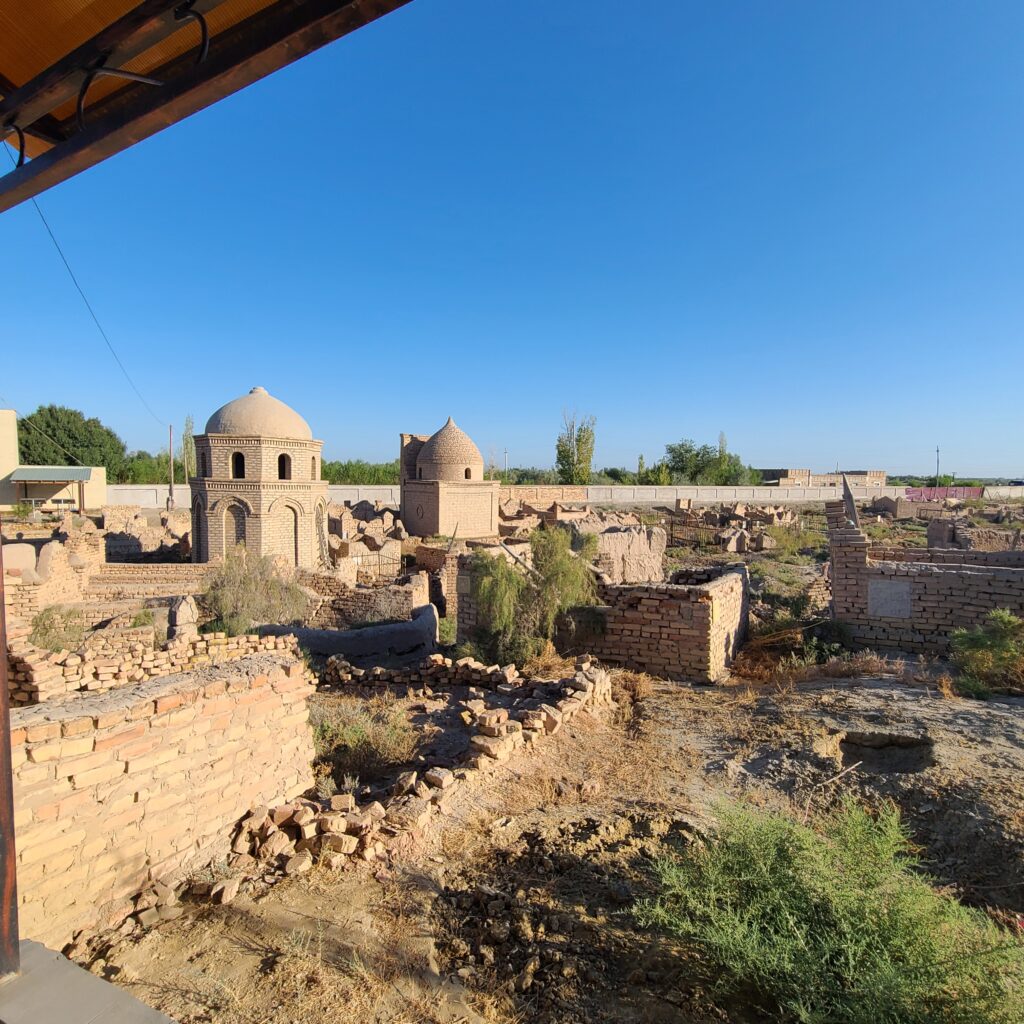
The necropolis is huge, and it’s quite easy to get lost as there’s no maps pointing where you are relative to the exit. So, I didn’t venture too far out and just wander around for a short while. I didn’t do much research at this place before arriving, so I couldn’t get much insight out of it. Still, it was quite intriguing, but eerie.
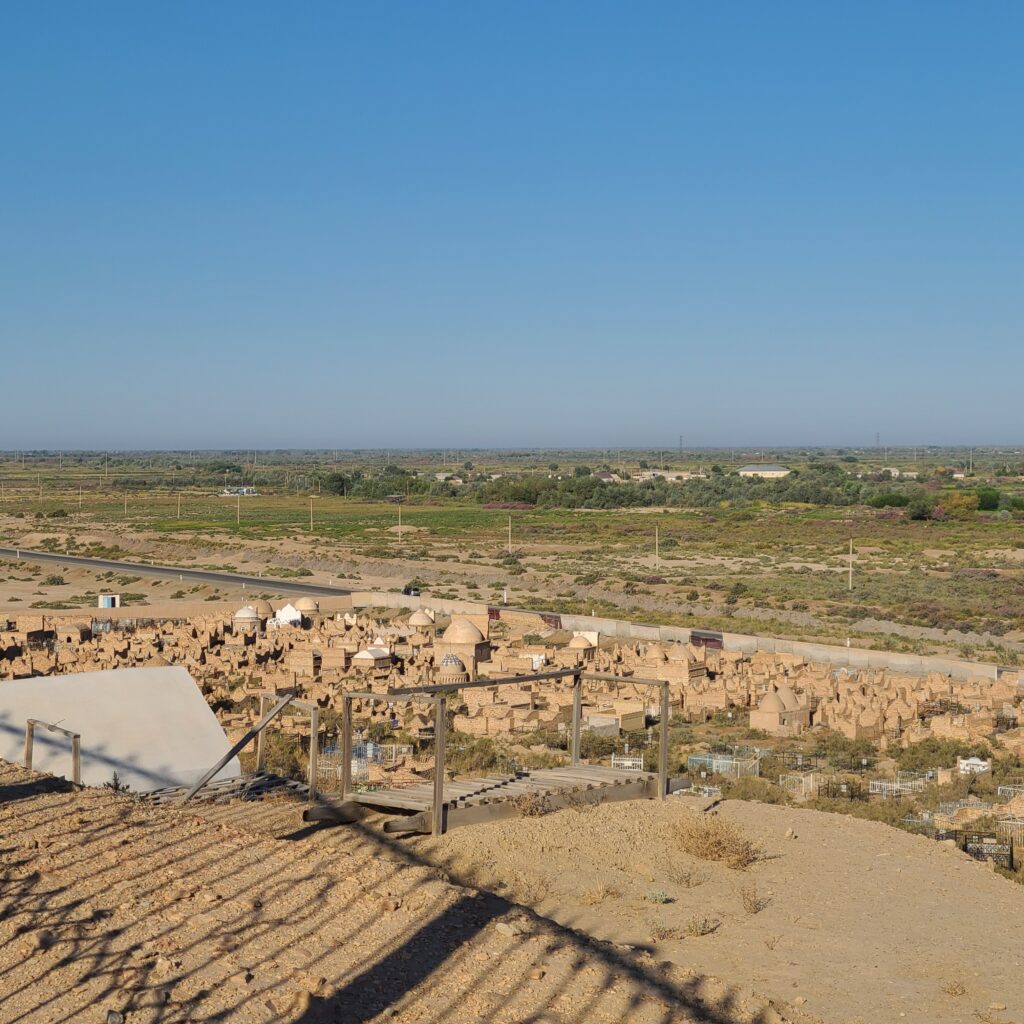
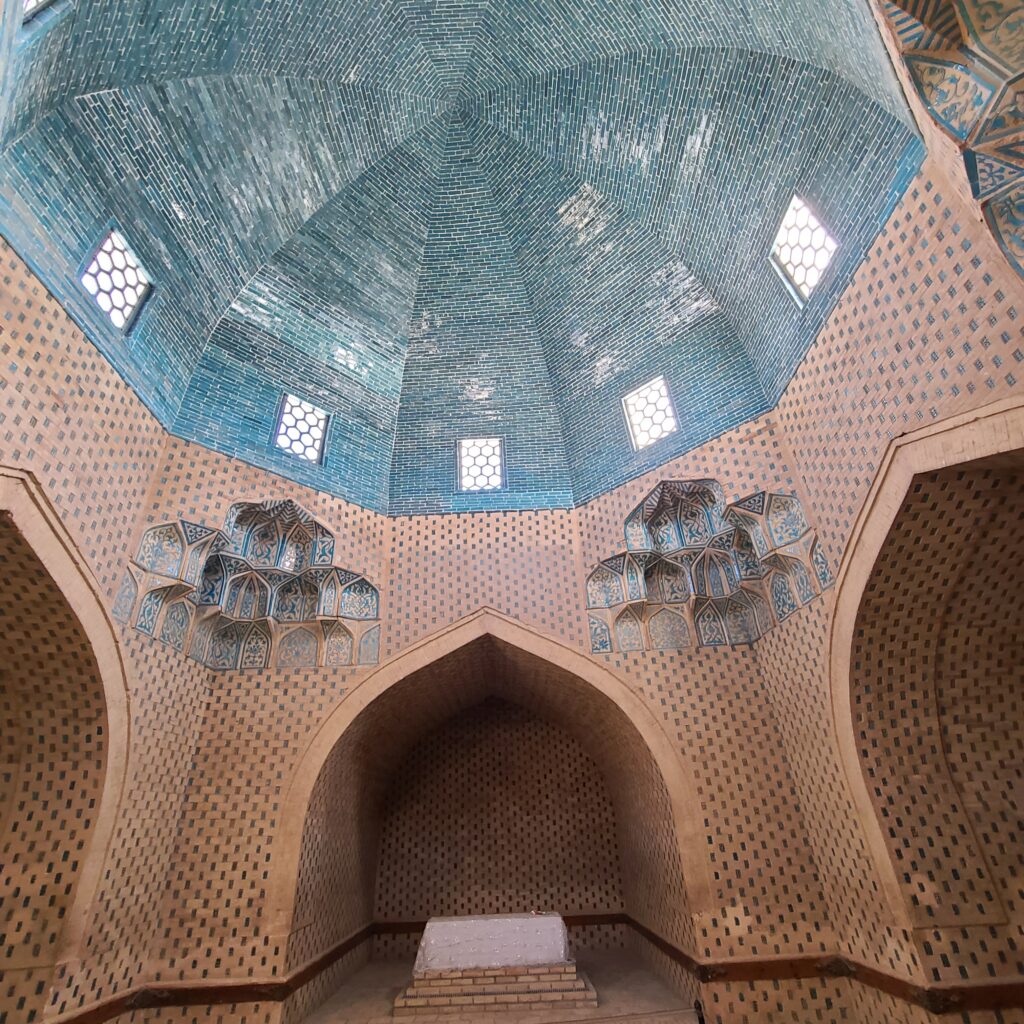
I entered a mausoleum with stairs descending underground. There were two coffins, and apparently this whole mausoleum is dedicated to Mazlumkhan and her lover. The history can be read more here.
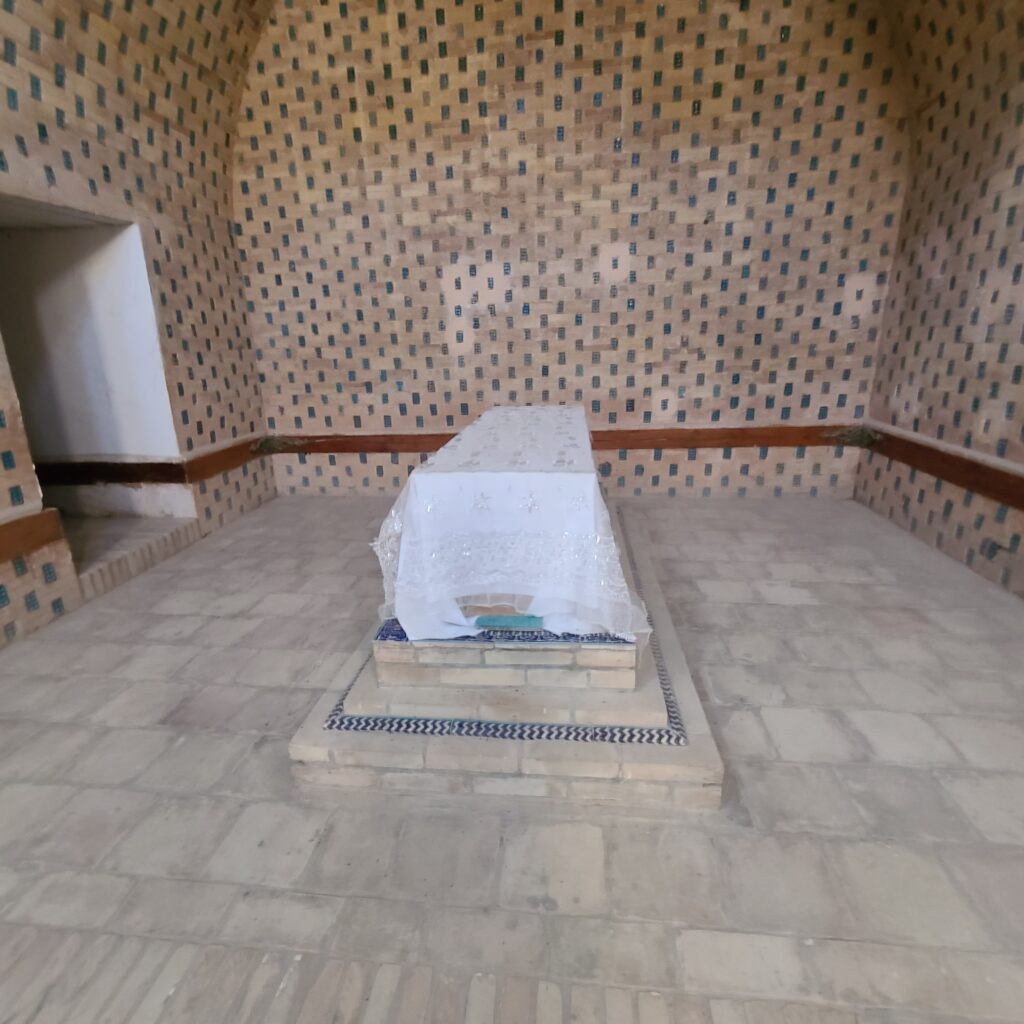
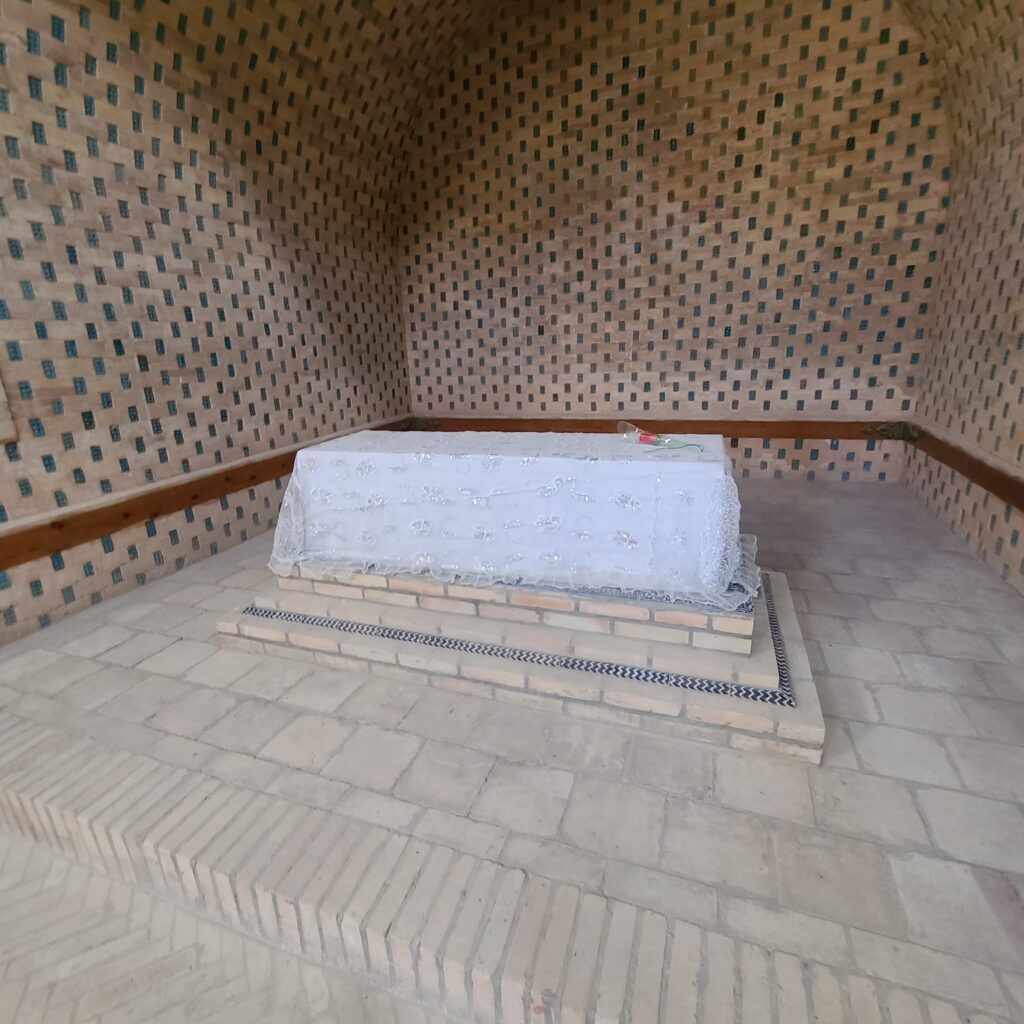
Heading back outside again, I took more pictures of the necropolis.
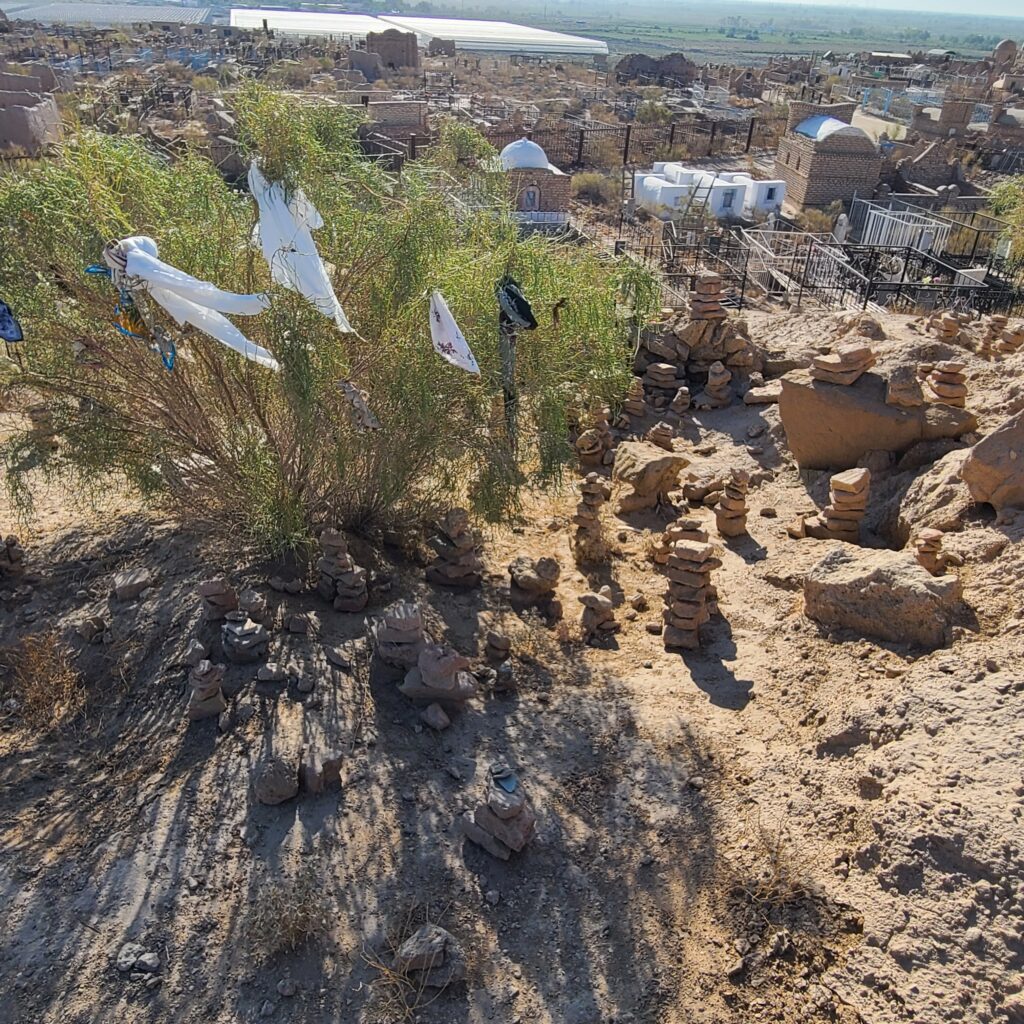
There were places where there were bricks that were stacked on top of another. I wished to know more about why they’re like that, but had to insights.
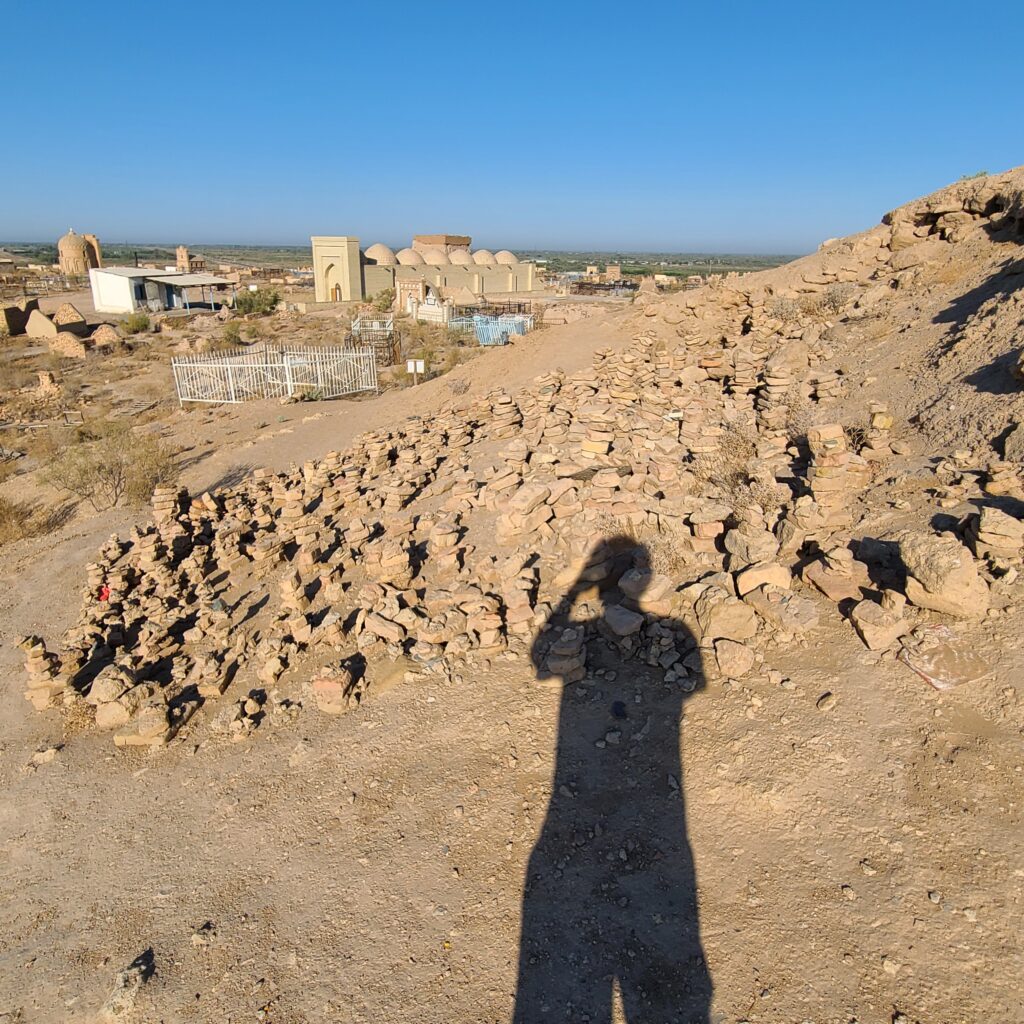
Some of the graves are quite recent.
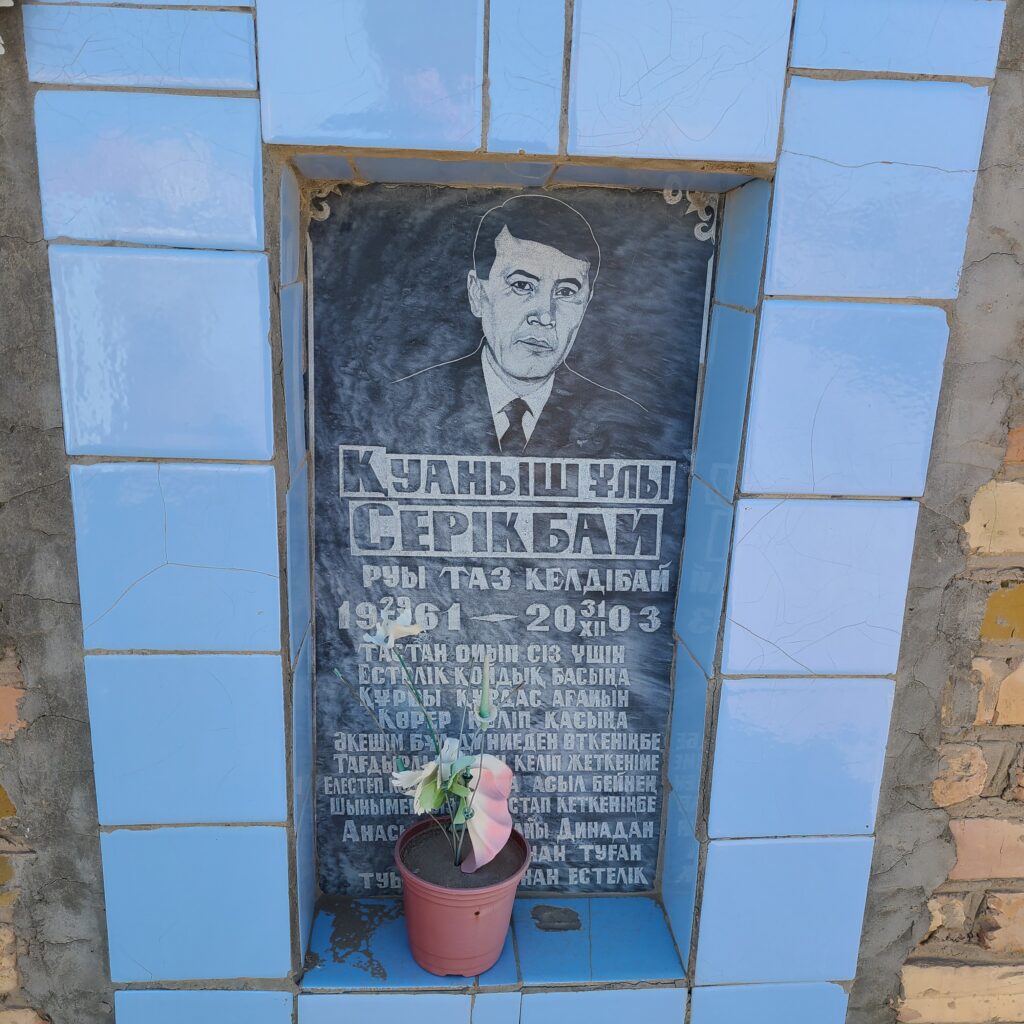
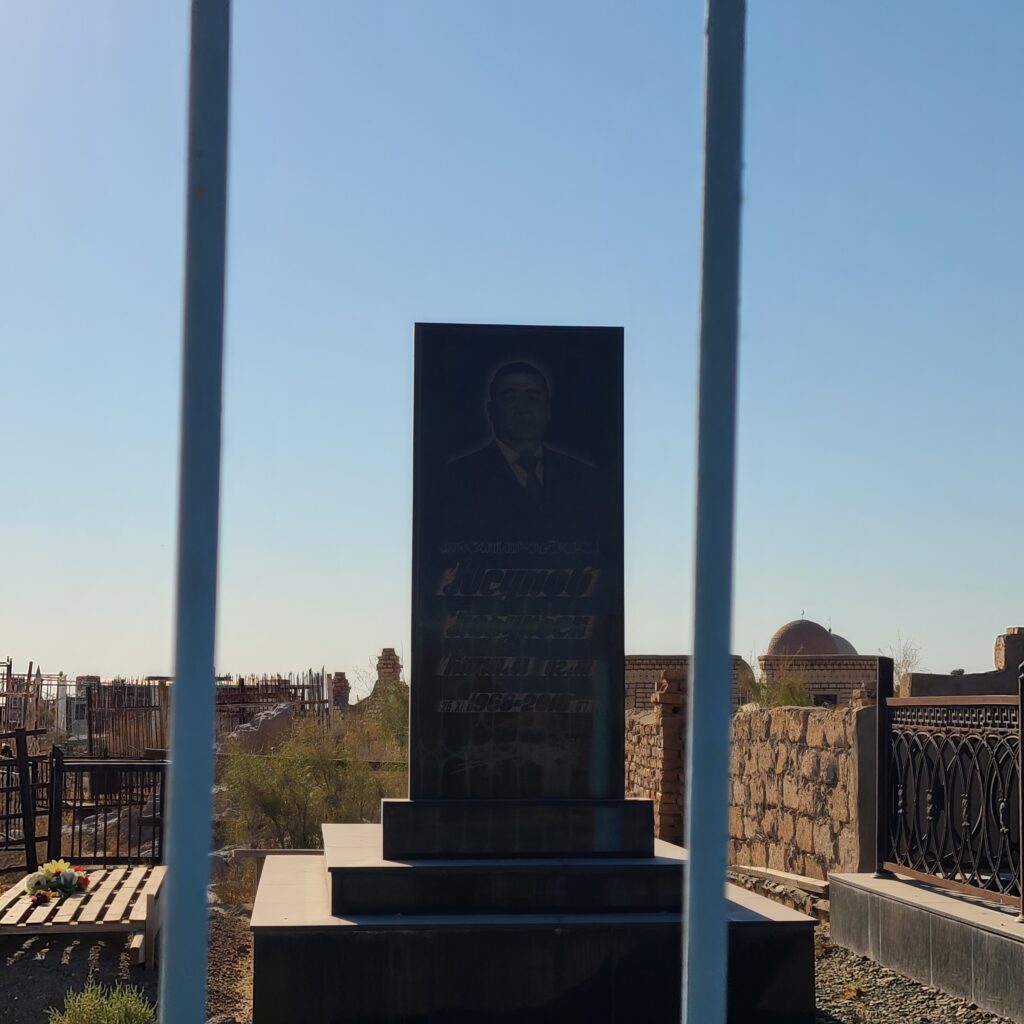

There was an interesting grave with a yurt shape.
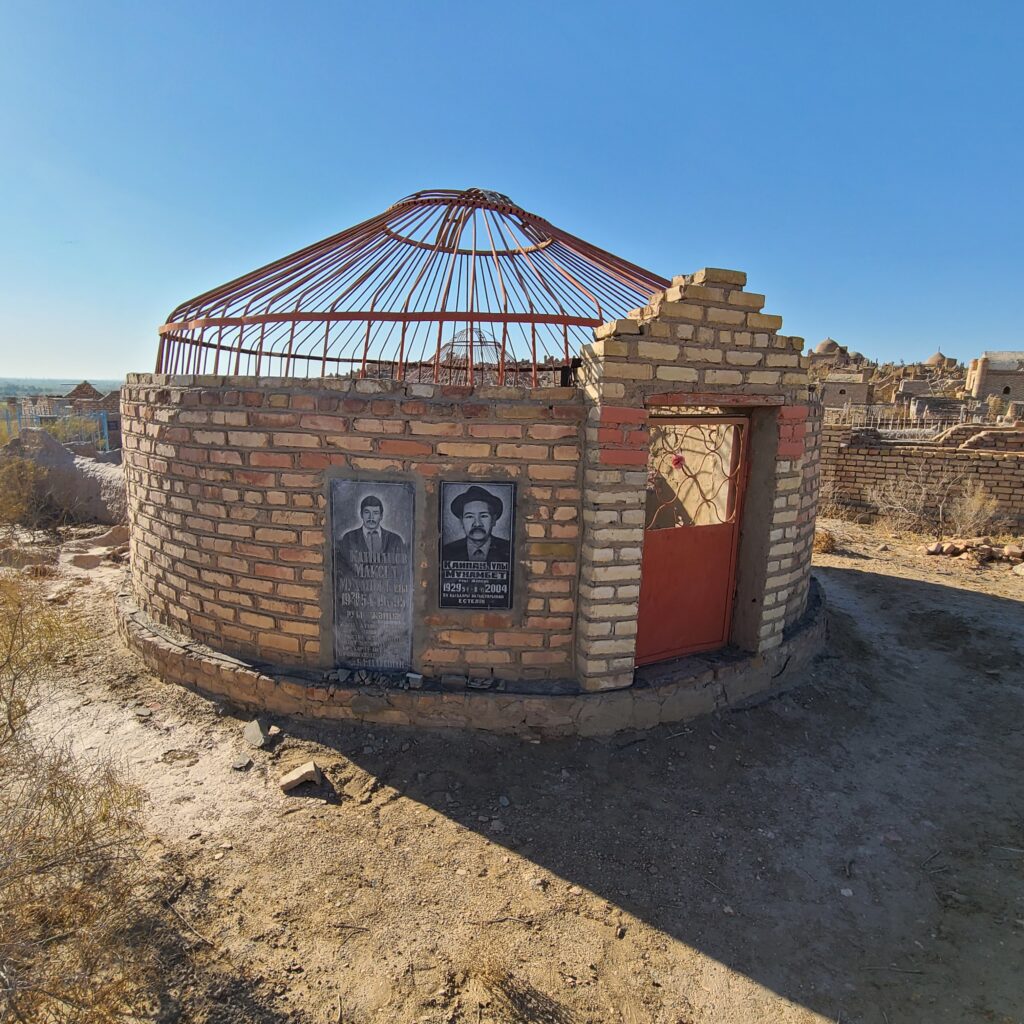
I encountered a dog who followed me around, but then shied away when I tried to be friendly with it.
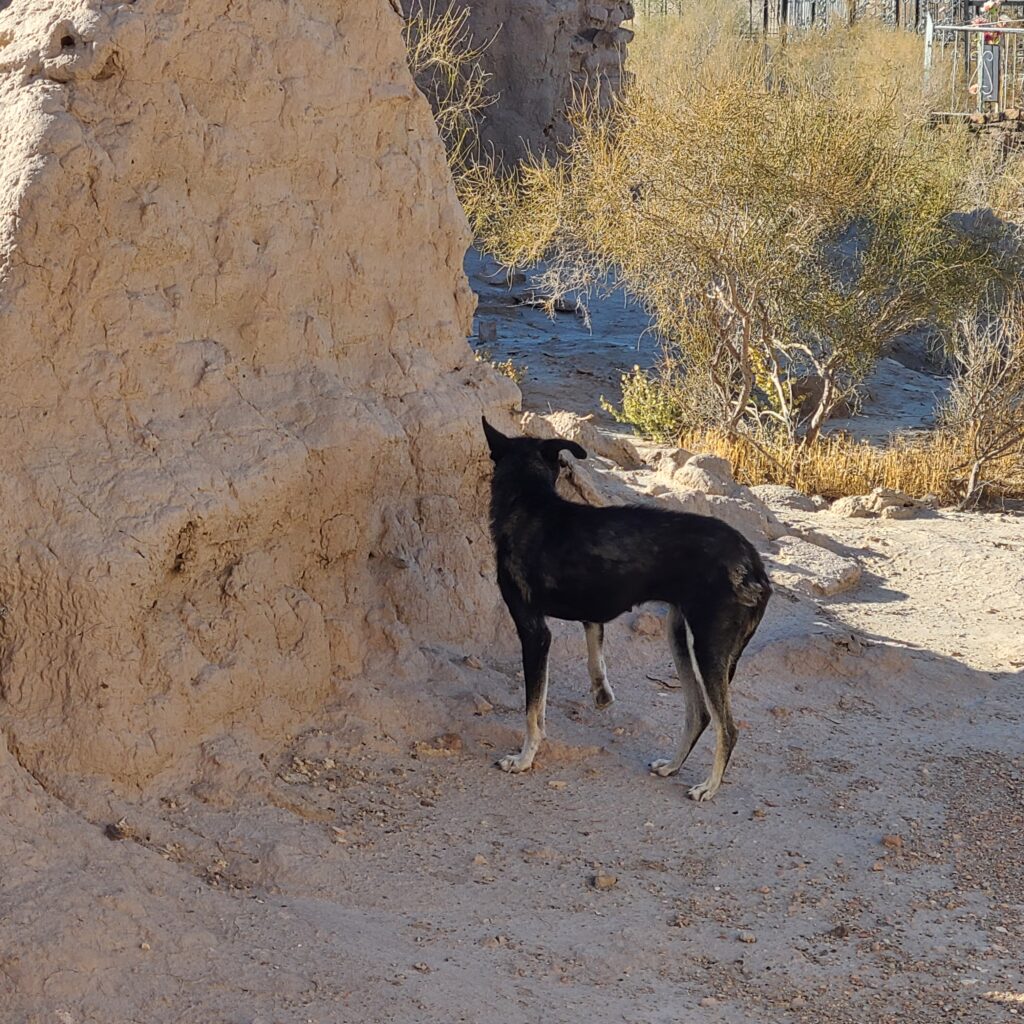
It was quite an interesting brief stop, but I wished I had more knowledge of this place. After making my way to the exit, we continued all the way to Muynak. After another hour of an uneventful ride, we encountered the ‘MOYNAQ’ sign that indicates that we’re close to the Aral Sea.
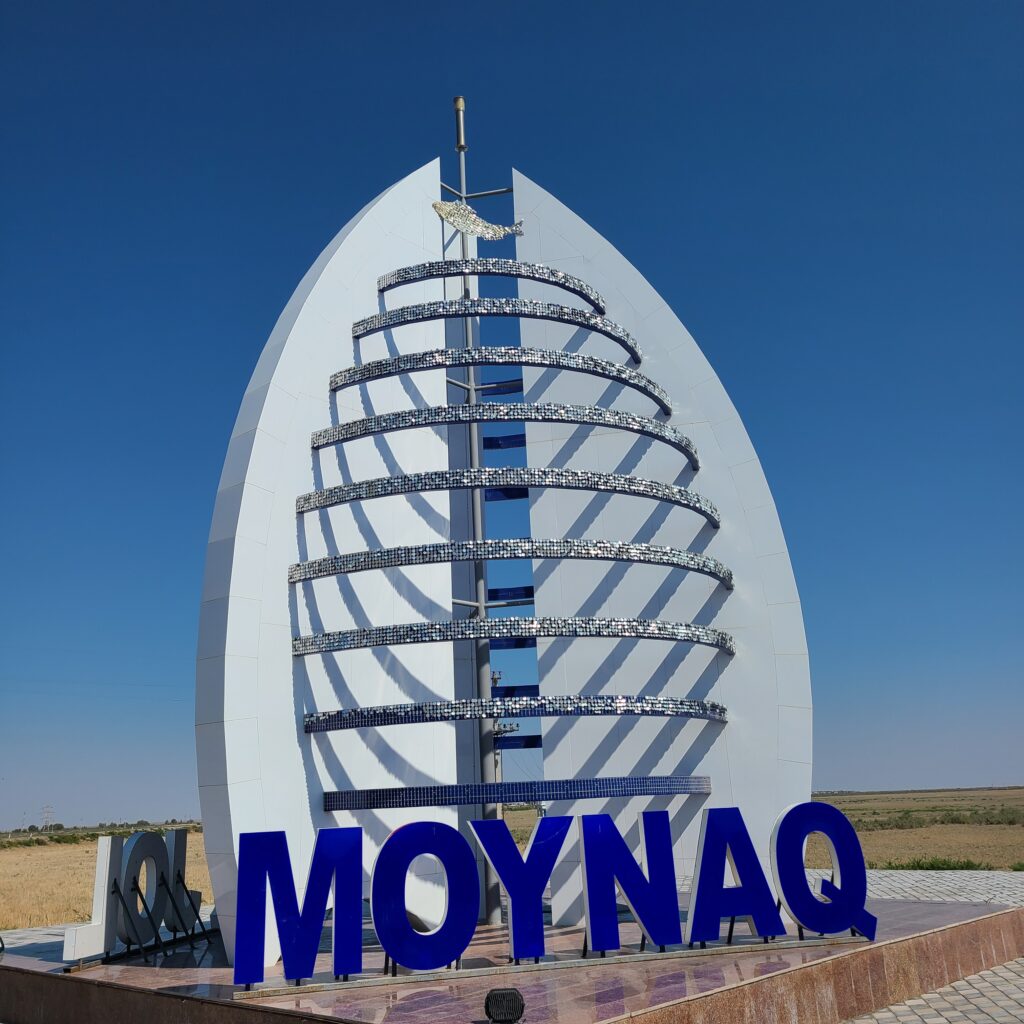
As you can see at the top of the sign, there’s a fish ornament that tells us that this was a fishing town. Sadly, that’s no longer the case. After navigating through the town a little bit, we arrived at the Aral Sea open air museum.
There’s an obelisk at the front that showed the water level of the Aral Sea throughout recent decades.
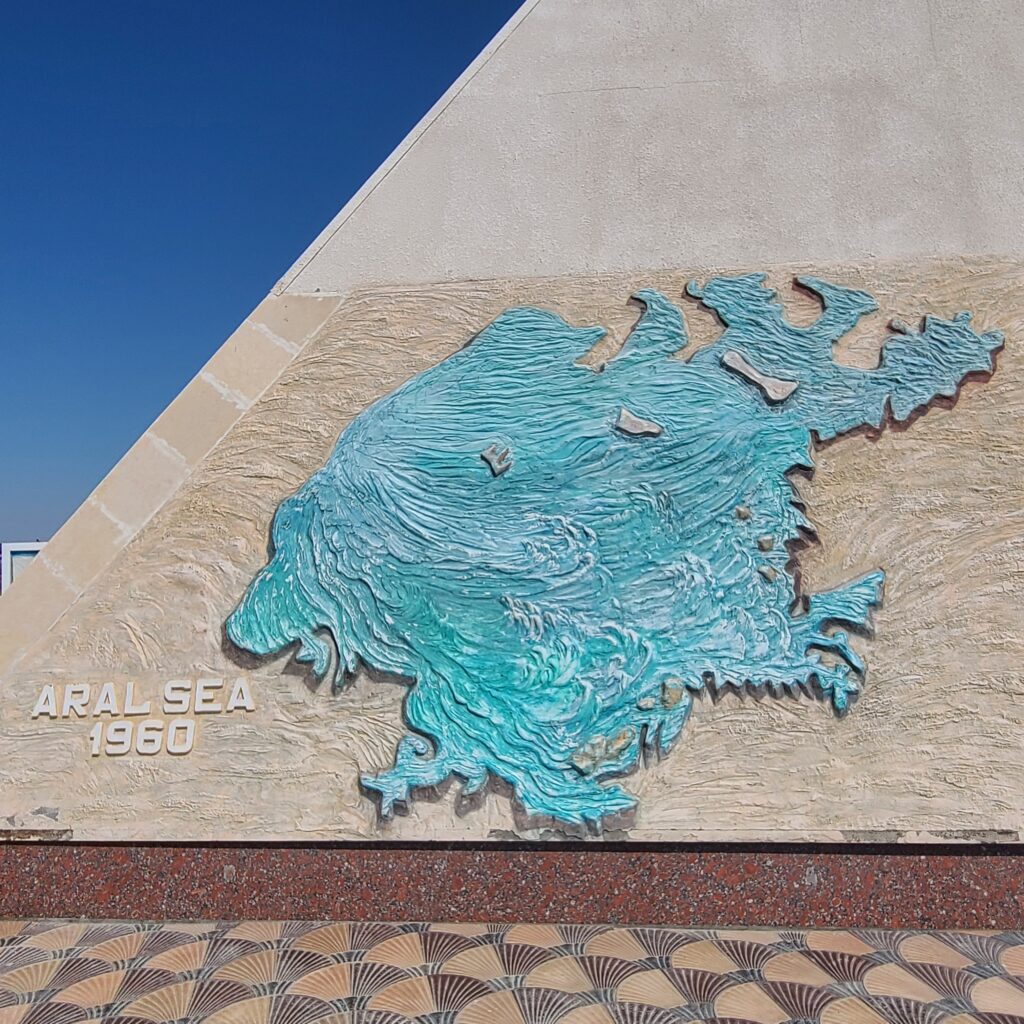

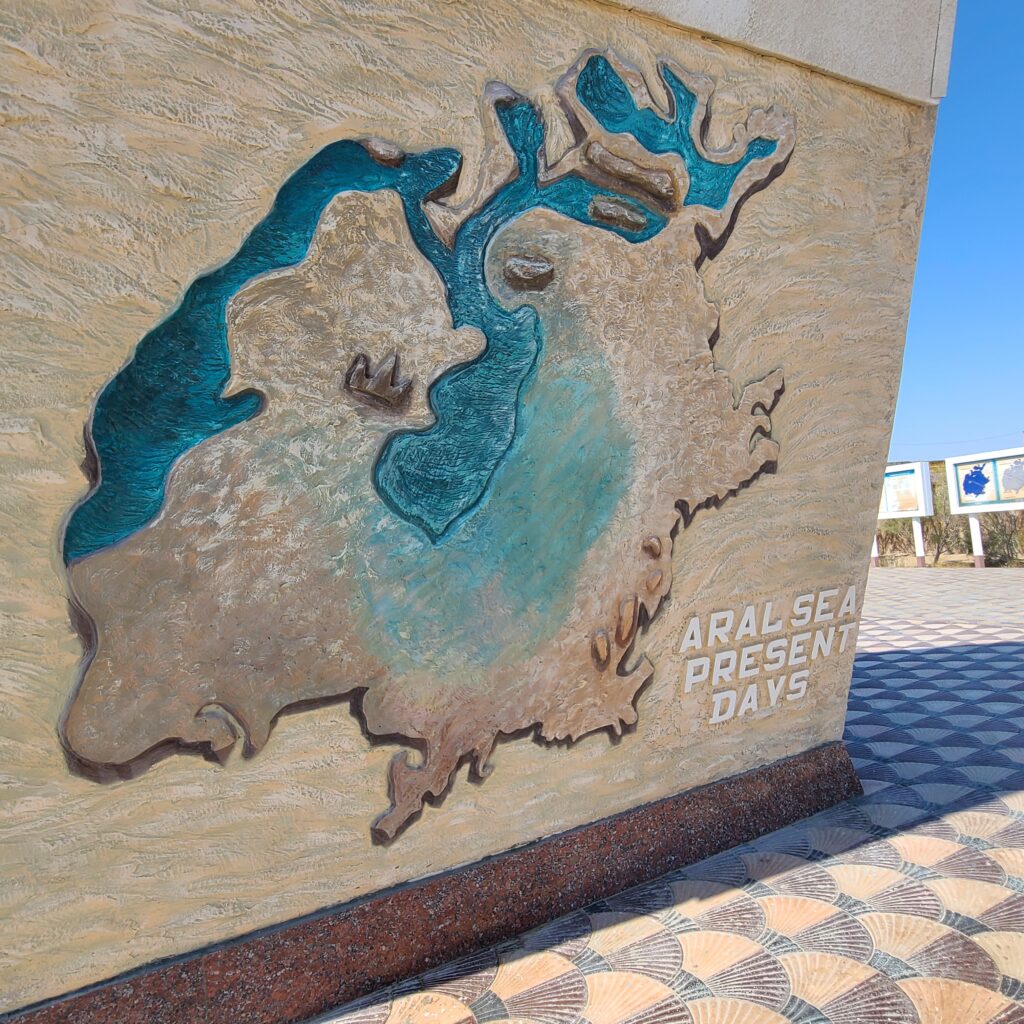
Then, the main open-air museum of abandoned rusting ships are below the piers.
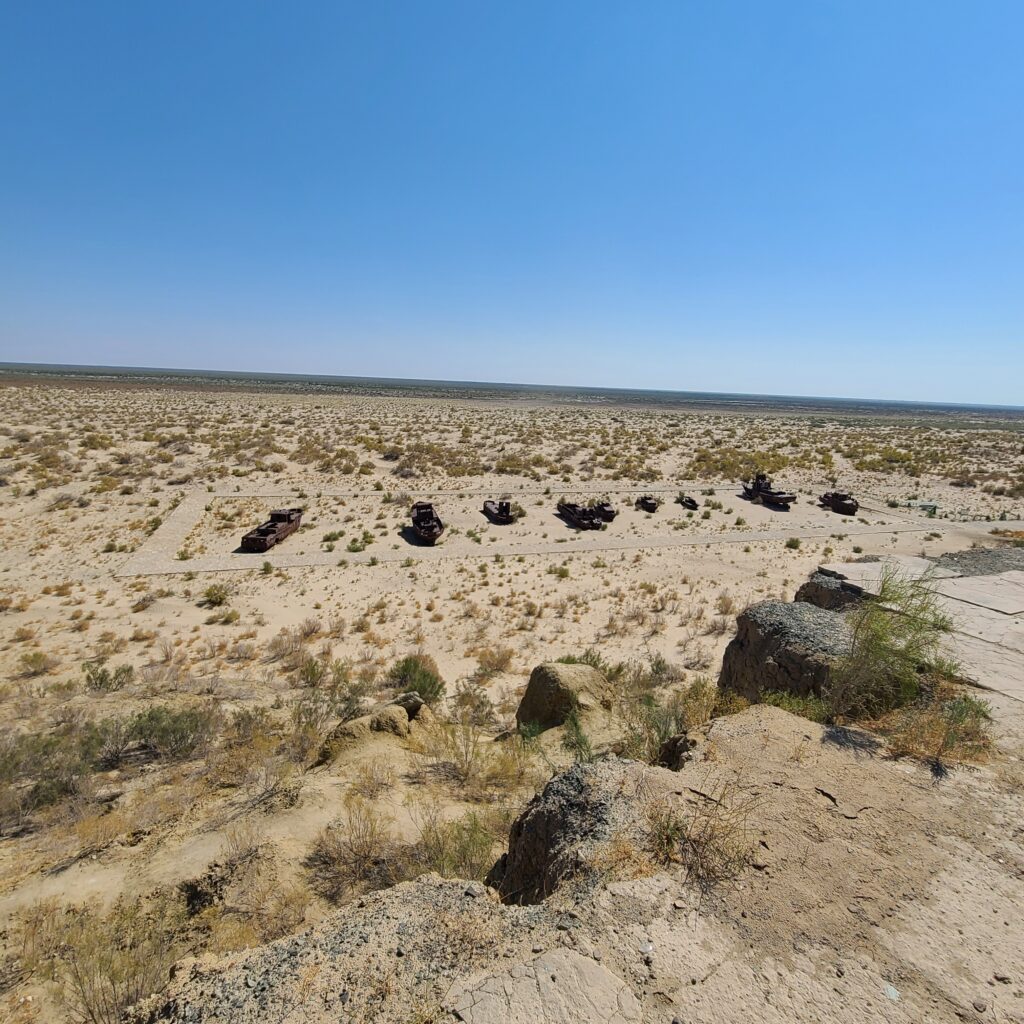
Interesting but sad sights. You’re free to climb up to them to get a closer look. The strangest part is that there’s still faint fishy smell while I was there. Pieces of seashells are found in the sand. It was quite hard to believe that just 60 years ago, I would’ve been underwater from where I was standing.
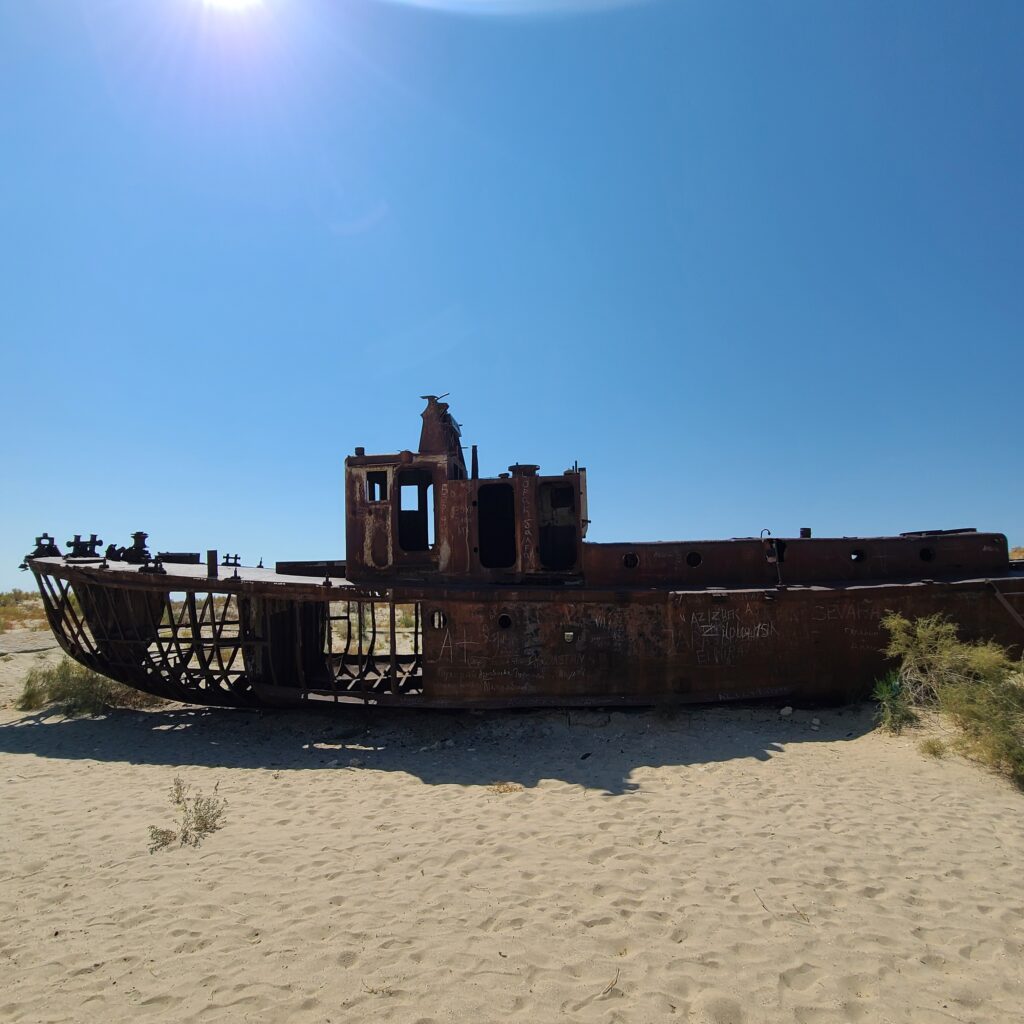
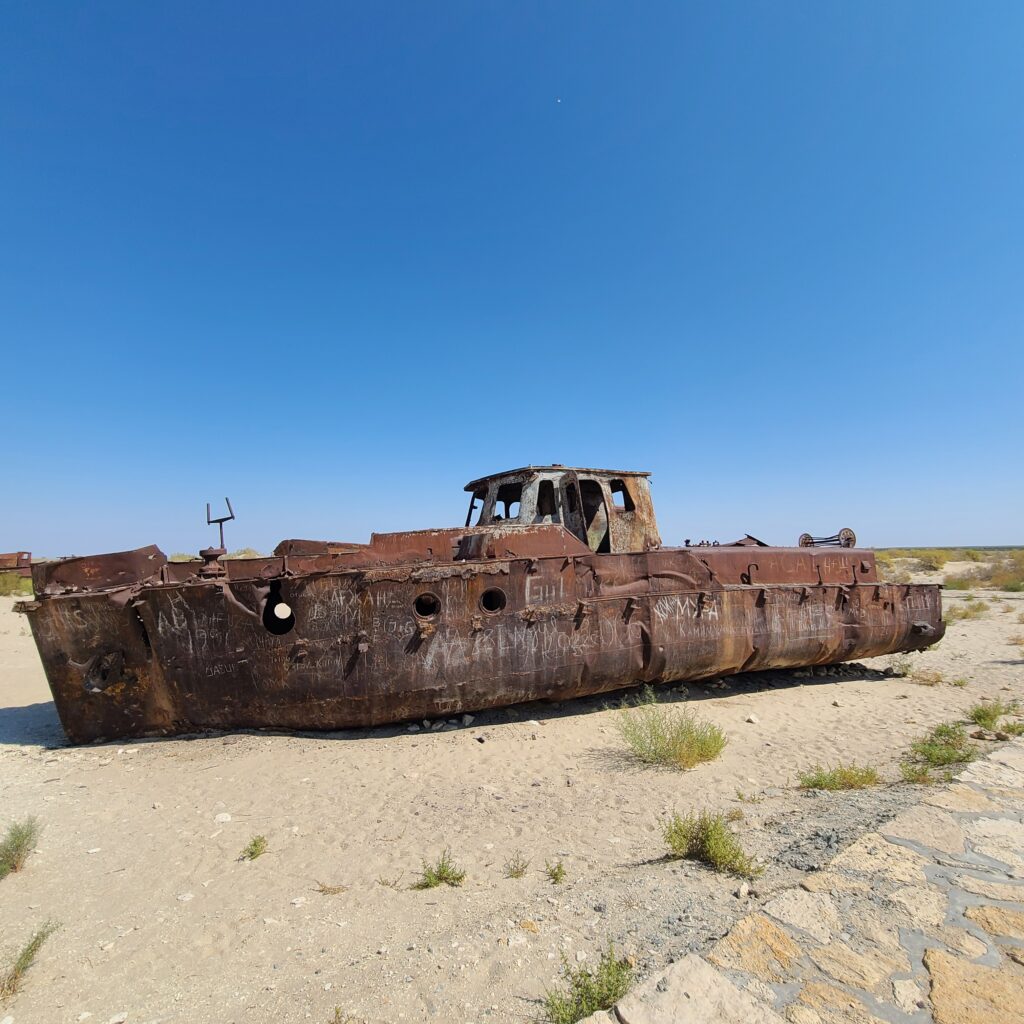
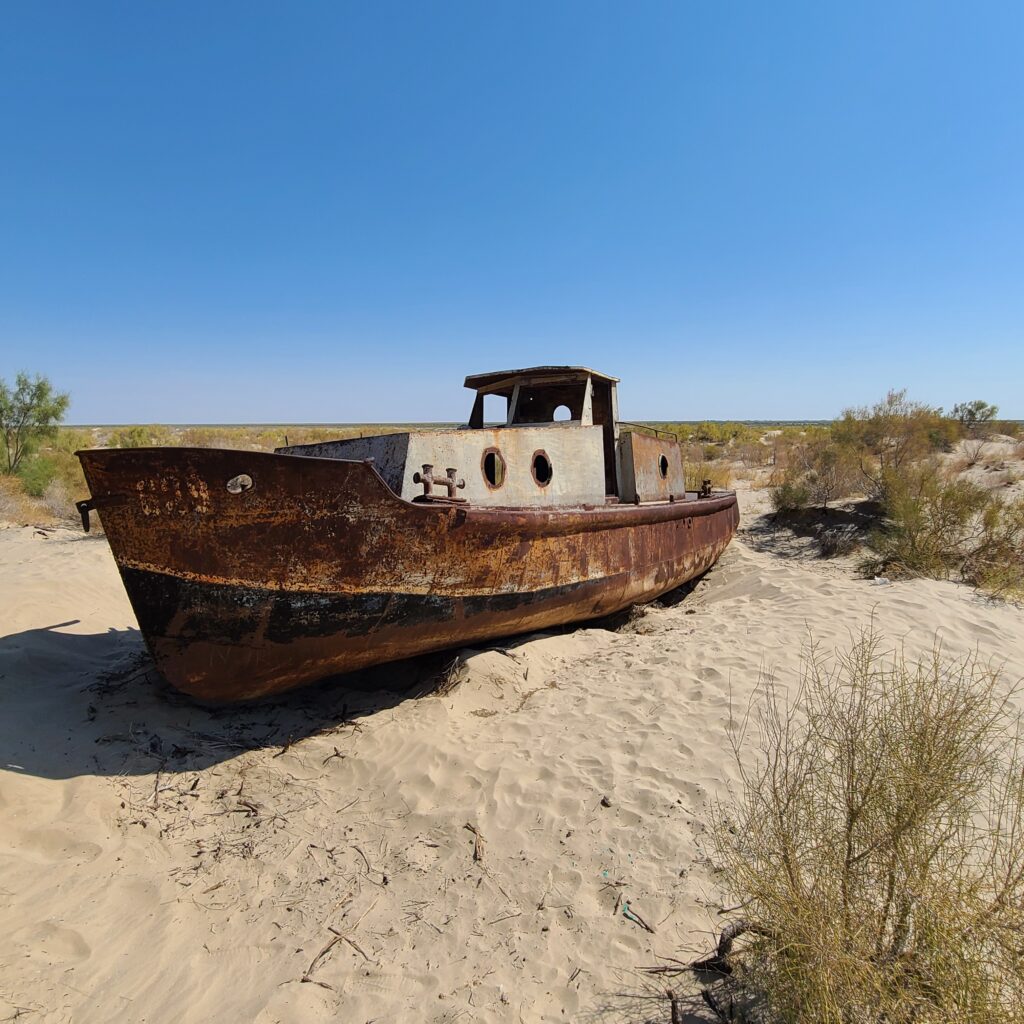
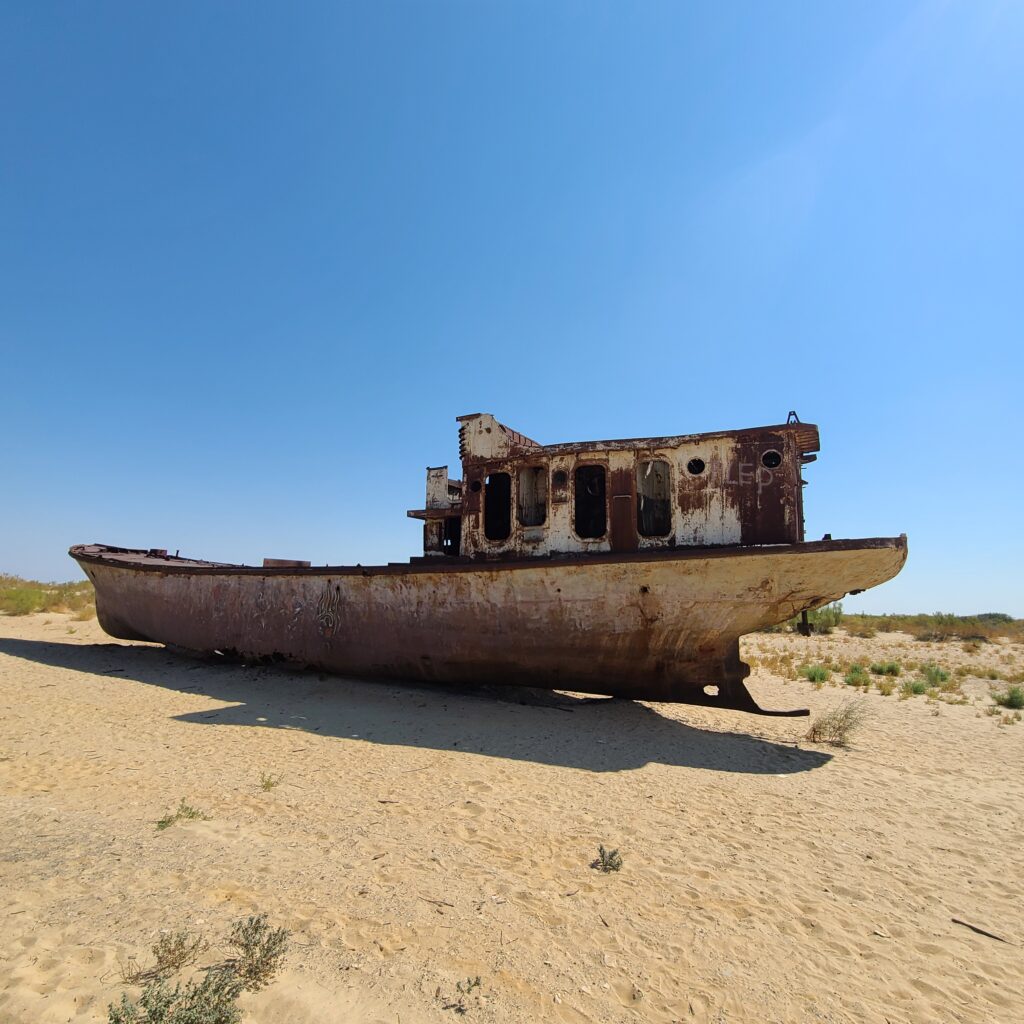
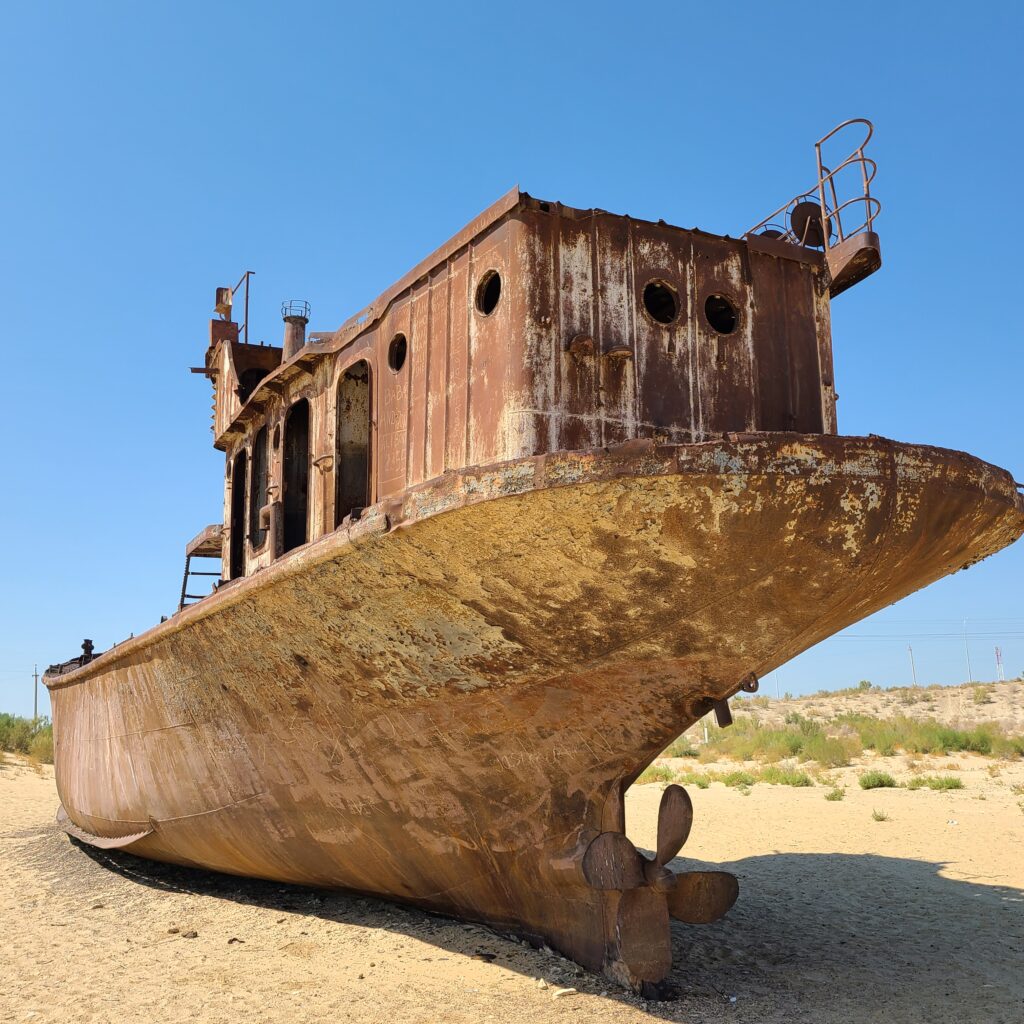
It was really hot outside, so then I headed to the indoor museum. I paid 130,000 UZS (~$12) to get inside. They took cash only. Inside showcased illustration what life was like before the Aral Sea dried up during the Soviet Union times.
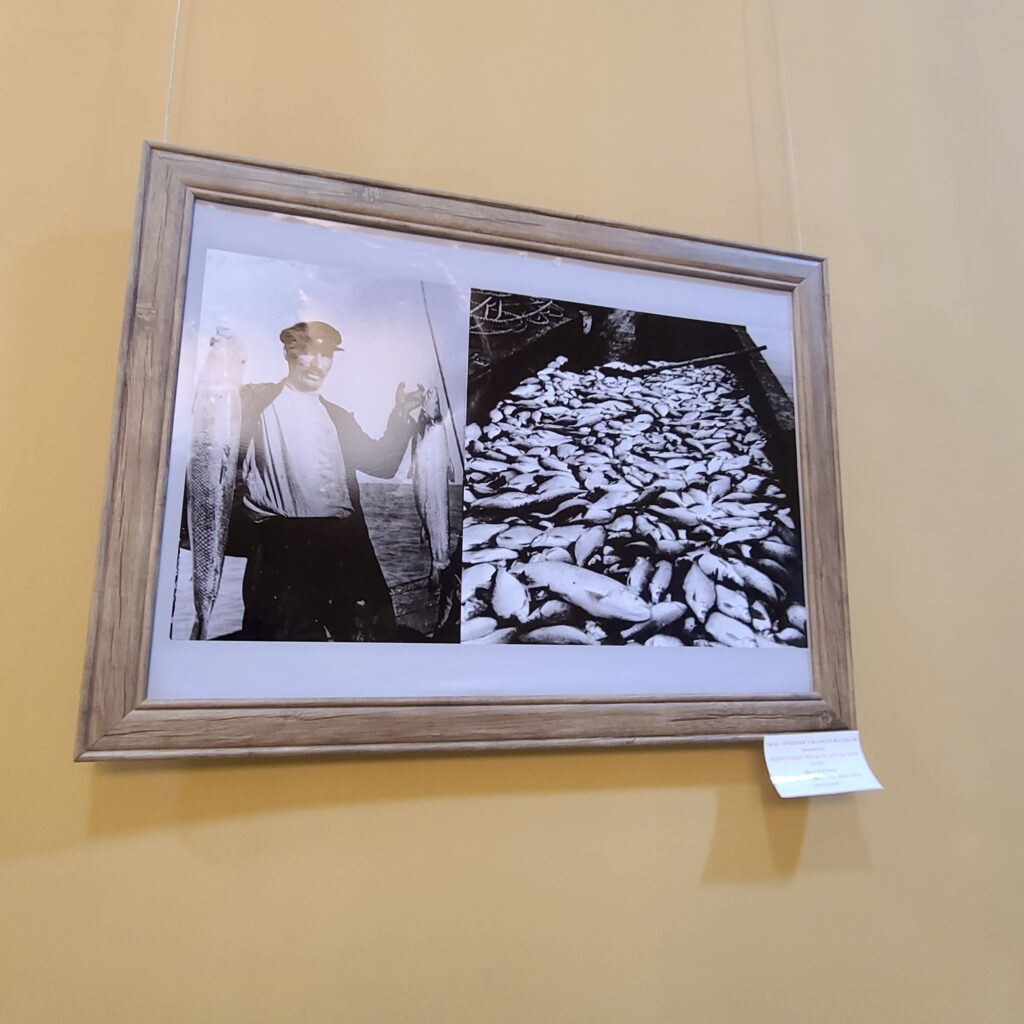

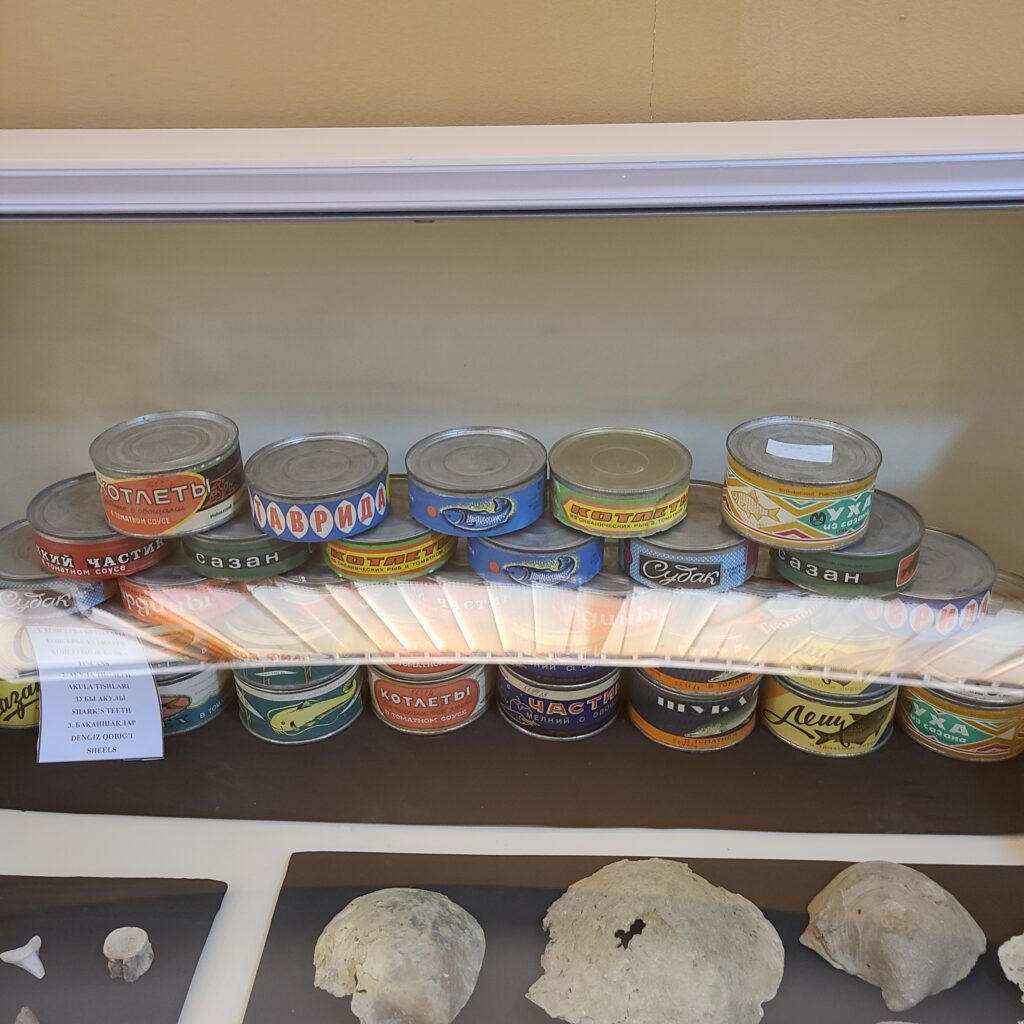
Closing Thoughts
I’ve never been close to an environmental disaster until I visited the vanished Aral Sea. It’s very mind-boggling that the 4th largest lake can be reduced to almost nothing within a single human lifespan due to human greed. I feel scared for the future generation after seeing the present people of Muynak have to pay the price from the previous generations’ blunders. With the more serious talks of climate change, I can only hope that the Aral Sea can serve as a great reminder for the human race to take it more seriously, before things get grim for all of us.
